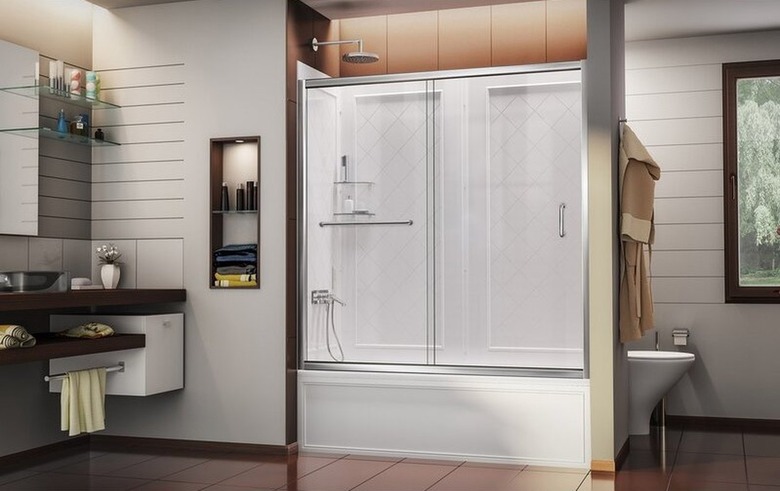How To Remove Scratches From Acrylic Bath And Shower Enclosures
We may receive a commission on purchases made from links.
Spotting scratches on acrylic bath and shower enclosures can sound the alarm for many homeowners who are fearful that one tiny blemish will mean replacing the entire enclosure. Acrylic is a softer, less scratch-resistant material, which can lead to unwanted weathering over time. Rest assured, though — buffing out scratches yourself is a quick, easy solution.
How to Reduce Unwanted Acrylic Scratches
How to Reduce Unwanted Acrylic Scratches
Many homeowners, particularly those with children, opt for acrylic bath and shower enclosures because they are safer and lighter than glass. The trade-off, though, is that these lighter acrylic bath and shower enclosures run a higher risk of wear and tear over time. Cleaning and maintaining your acrylic bath and shower enclosure weekly with warm water and a clean, nonabrasive cloth is key. A nonabrasive cleaner is also an effective way to minimize unwanted imperfections.
How to Remove Scratches From Acrylic Bath and Shower Enclosures
How to Remove Scratches From Acrylic Bath and Shower Enclosures
How deep are your acrylic surface scratches? Assess the extent of the damage by running your fingernails across the scratched acrylic surface. If the scratches are shallow enough that your nail does not catch, you can simply treat the area with a light abrasive cleaner. If a nail does catch, though, it is best to also use a heavy-duty abrasive.
1. Clean the Acrylic Surface Thoroughly
Before buffing out any scratches, thoroughly clean your scratched acrylic surface. Use warm water and a few drops of either rubbing alcohol or mild dish soap applied on a clean, dry microfiber cloth or cotton round. You want to remove all dirt and grime around the scratch so as not to rub the dirt into the surface later.
2. Buff Out Scratches With a Mild Abrasive
Once your surface is clean, begin removing scratches from your acrylic bath and shower enclosure with a mild abrasive, like toothpaste or a paste of equal parts water and baking soda. Apply just enough abrasive to cover the scratch. Using either a cotton round or clean, dry microfiber cloth, work in small circles to even out the surface. After a few motions, rinse off any lingering residue and assess your progress. This process may take multiple rounds of rinsing and repeating before your scratch fully lifts.
3. Switch to Buffing With Wet Sandpaper for Deeper Scratches
Deeper scratches require added elbow grease and upgraded materials. If your milder abrasive isn't cutting it, switch to slowly leveling out your scratched acrylic bath surface with a water-soaked piece of 800-grit wet/dry sandpaper. Soak your sandpaper prior to use for several minutes or until it's fully saturated with water. Buff the surface gently so as to avoid inadvertently rescratching the acrylic. Exercise the same rinse and repeat regimen, rewetting your sandpaper between passes as needed.
4. Move On to a Higher-Grit Sandpaper
Once only a vestige of the original scratch remains, clean the affected area again before repeating your circular buffing motion with finer 1,000-grit sandpaper. Continue cleaning and buffing out scratches with progressively finer-grit sandpaper (up to 2,000 grit) until all scratches totally disappear. At that point, clean your acrylic surface with a damp microfiber cloth.
5. Apply a Final Polish
All this buffing may diminish your acrylic surface's original luster. Fear not! Simply apply a thin coat of either plastic or metal polishing compound over the dull spot. Work the compound in circular motions with a clean, dry microfiber cloth. After a few repetitions, your acrylic bath and shower enclosure will look completely restored.
